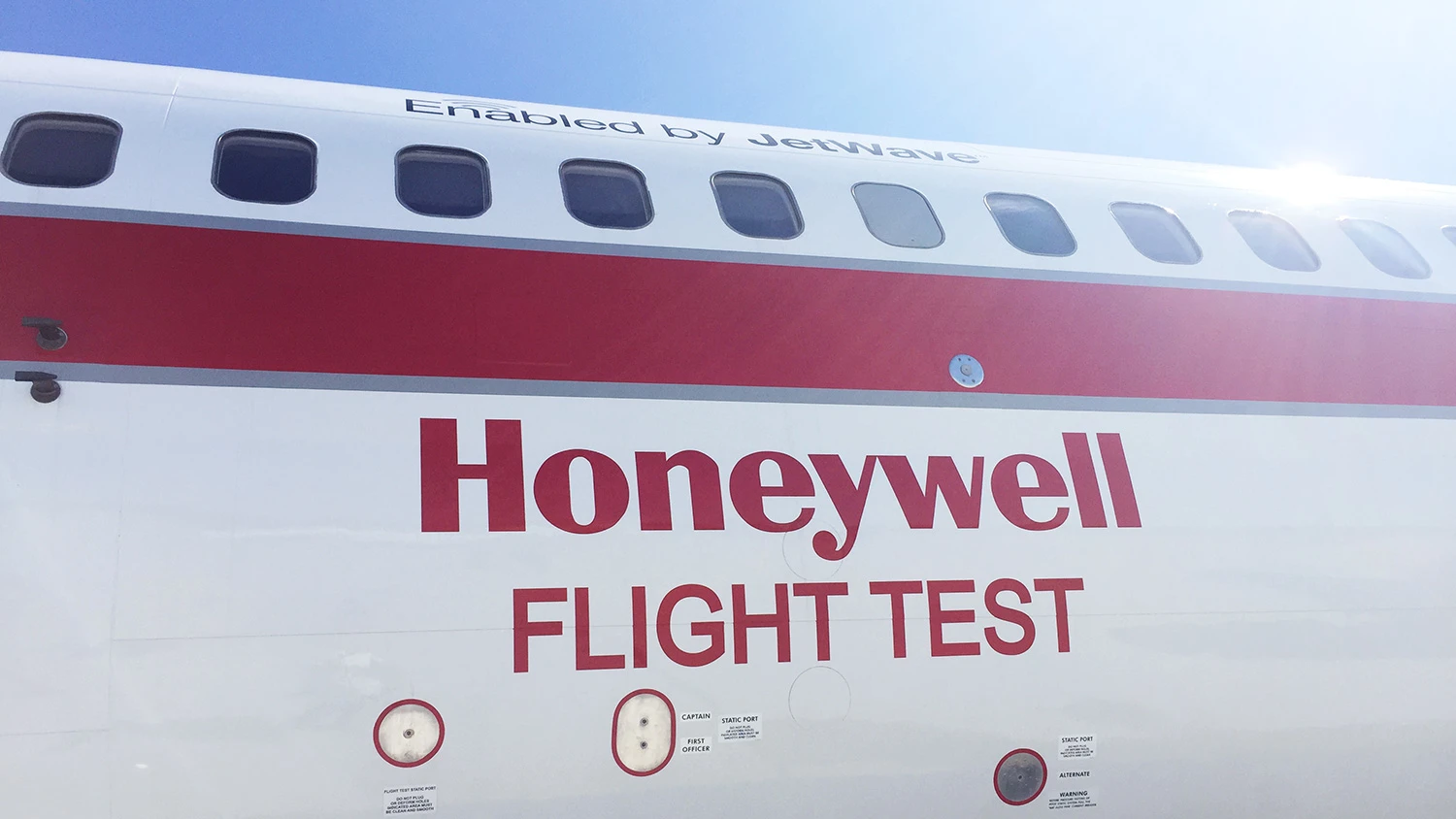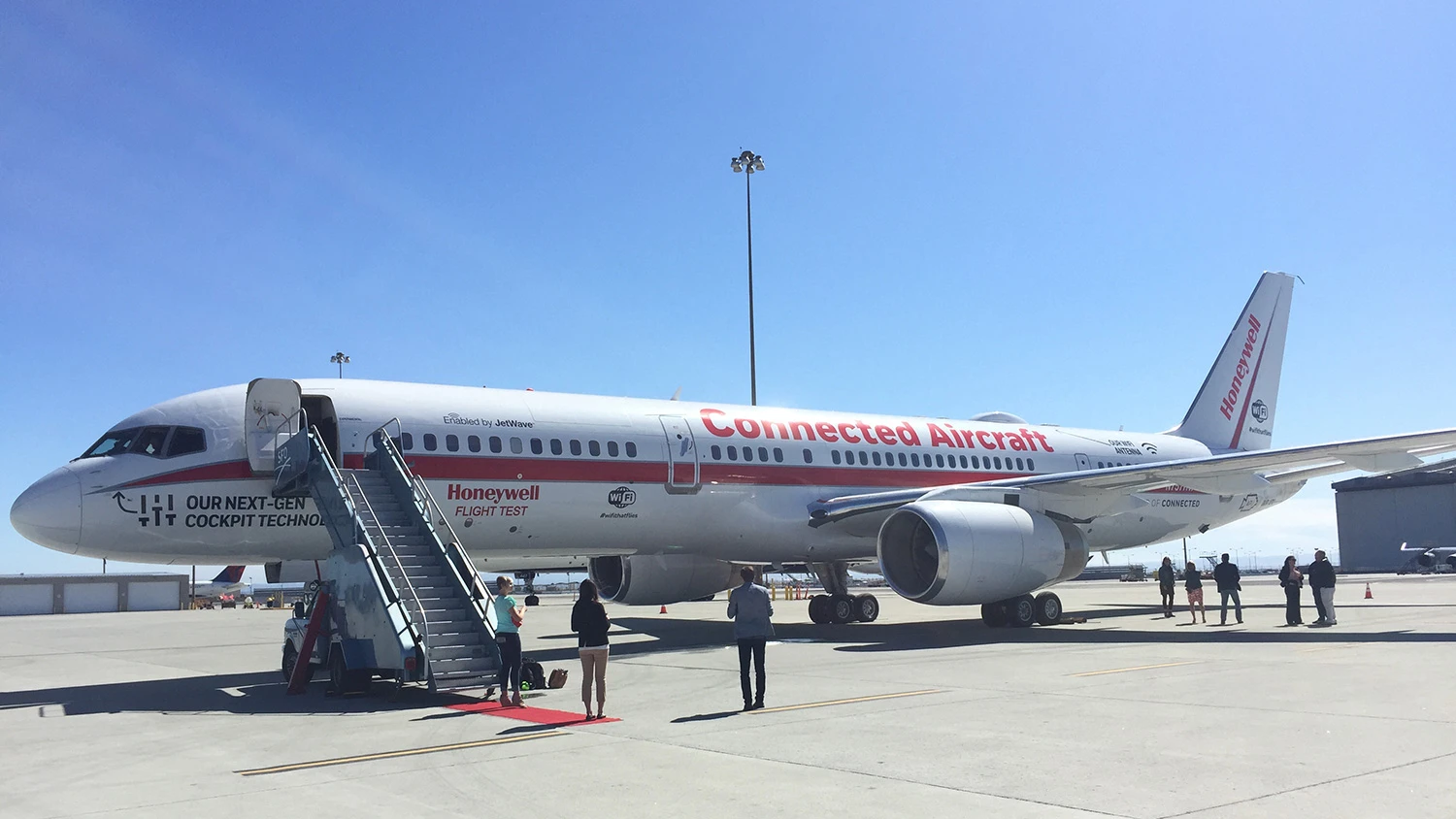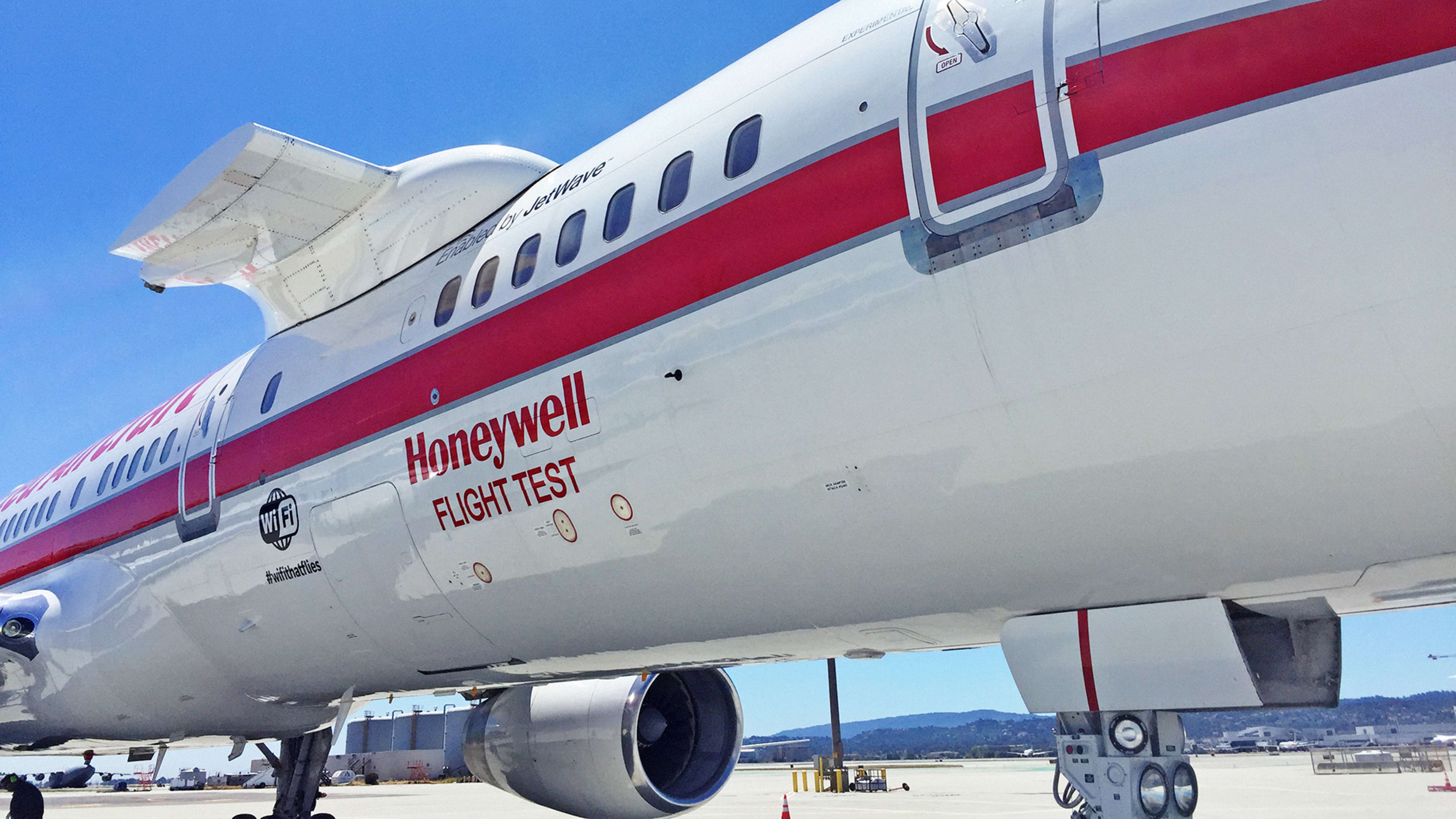As airline passengers, what do we want? Safer and smoother on-time flights, along with some Netflix—and all for less money. When do we want it? Now.
Well, all of that just might be possible due to a new system being developed by Honeywell, the technology, aviation, and military giant. As you read this, airlines around the world are beginning to slowly upgrade their onboard connectivity systems to Honeywell’s latest version—and it’s those systems that are already beginning to impact the aviation industry, offering a reduction in operational downtime of up to 35%, fuel costs as much as 5% lower, and uninterrupted internet capable of industry-leading speeds. Not to mention the potential for a whole lot less turbulence.
This week, Honeywell began a nationwide tour of its flagship Connected Aircraft, an airborne test-bed of dozens of onboard systems meant to help develop and eventually deliver the latest technology to airlines around the world as well as countless corporate and private plane owners.
The first stop on the tour was San Francisco, where a few other reporters and I got the chance to soar into the sky aboard the flying test-bed to see firsthand what’s coming down the aviation pipeline.
The plane, a Boeing 757, doesn’t at first strike you as one on which the future of flying is being tested. That’s unsurprising, given that it’s 35 years old, and has a whole lot of wires and insulation on display to anyone wandering its aisles.
Yet for Honeywell, which also operates a fleet of other experimental aircraft, this 757 is very much the place to try out everything from apps that deliver real-time weather information to actually flying into the heart of severe thunderstorms in order to find out how airplanes respond.
It all starts, though, with satellite-based Global XPress Ka-band connectivity provided by Honeywell partner Inmarsat. Currently operating from three satellites, the system will shortly be upgraded to a fourth, and there are two more on order. The upshot is a dedicated network capable of delivering high-speed internet anywhere in the world without any drop-offs as a plane flies between satellite coverage areas.
That, according to Honeywell, sets its JetWave system apart from competing onboard networks like Gogo, which can sometimes drop a connection when transiting satellites.
Honeywell promises at-home-quality internet capable of streaming Netflix, YouTube, or any other video service to more than 20 concurrent users. During my flight, a Honeywell representative showed that he was getting download speeds of around 35 Mbps. In my own test, I topped out around 12 Mbps, and though I was able to stream high-quality Netflix videos, the system did have a slight delay. At-home quality? Perhaps not, but still capable of streaming movies, so who’s counting?

Weather Apps And More
But being able to watch movies or live TV over the internet when plying the world’s skies isn’t where Honeywell’s aviation connectivity story ends. That connectivity powers a series of branded apps aimed at pilots and other airline personnel that could help airlines fly passengers from point A to point B faster, safer, more comfortably, and cheaper.
The first is known as GoDirect Weather. To begin with, it provides real-time radar-based weather information, the location of thunderstorms and clear turbulence, and even reports from other pilots about conditions. The tool, for example, can show in real time how much turbulence exists at any altitude, allowing a pilot to fly higher or lower to avoid it. In the past, noted Honeywell program manager Nate Turner, the only way to get that information was from pre-flight forecasts or from in-flight communications with pilots of other planes further along on the same routes.
Flying over California’s Central Valley, Honeywell pilot Joe Duval told me that the app can give him the information he needs to maneuver around rough weather before his plane ever encounters it. And that can be especially helpful when flying over oceans, Duval said, where there are no ground-based radar systems. Now, pilots can find out as it’s happening what weather awaits them, and have the time to make a decision about how to avoid it.
The app also ends pilots’ heavy reliance on weather charts printed out prior to departure that can’t be updated once in the air. “On a 12-hour flight,” Duval said, “that data you had when you took off is old news.”
Another app is one aimed at flight efficiency, which merges live weather forecasts with pilots’ flight plans, allowing them to see at a glance every kind of weather that’s in their intended path. With that app at their disposal, Turner explained, pilots can adjust en route, choosing a more optimized path and steering clear of the kind of weather that rattles passengers’ nerves and slows planes down.
That’s where the fuel savings of between 3% and 5% come from, Turner explained. And while it might not sound like much, it can easily add up to millions of dollars a year for large airlines–not that they’ll necessarily pass those savings on to you and me via lower fares.
A third app is known as GoDirect Flight Preview, and it’s meant for pilots who are flying into airports with which they have little familiarity. It offers visualizations of approaches into any airport in the world, allowing them to see where important waypoints will be located, as well as any special ways that airports or municipalities want pilots to land. This, too, can reduce inefficiencies in flying by helping pilots understand just how to approach destinations with difficult terrain like Aspen, Colorado, or those with very specific obstacles, like the bridges that planes landing in San Francisco must pass over.
Yet another tool is GoDirect Flight Bag Pro, which combines flight planning with fuel planning and which can show real-time overlays of weather along a planned route. That app allows pilots the ability to do new performance calculations based on real-time weather updates and other factors, all meant to help optimize fuel usage. The tool also gives airlines access to flight support services that can help determine route efficiency.

Honeywell says its JetWave connectivity service is currently being rolled out and will make its way into airlines’ global fleets over the next year to 18 months—it takes three days to retrofit a plane with the new service.
Actual implementation of JetWave is up to individual airlines, which will each make their own choices about how much throughput to offer, what to charge, and whether or not to allow passengers to upload anything more than text messages.
Of course, Honeywell claims that passengers should look forward to fewer delays and better onboard service. That remains to be seen. But for a flying public weary of never-ending horror stories related to mechanical issues, weather delays, and poor internet connectivity at high prices, Honeywell’s offerings promise a glimmer of hope as we make our way through the conga line of planes in the skies.
Recognize your brand’s excellence by applying to this year’s Brands That Matter Awards before the early-rate deadline, May 3.
